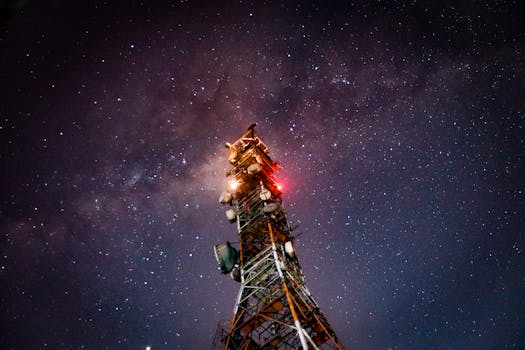
MEO Satellites: Revolutionizing Global Communications with Medium Earth Orbit Technology
MEO satellites, or Medium Earth Orbit satellites, are a type of satellite that operates at an altitude of around 2,000 to 36,000 kilometers above the Earth’s surface. This range is significantly lower than the Geostationary Orbit (GEO) satellites, which are located at an altitude of approximately 36,000 kilometers. The lower orbit of MEO satellites allows for faster and more reliable communications, making them an attractive option for a wide range of applications, including telecommunications, navigation, and Earth observation.
The use of MEO satellites is becoming increasingly popular due to their ability to provide global coverage with fewer satellites than traditional GEO systems. This is because MEO satellites have a larger footprint on the Earth’s surface, allowing them to cover a wider area with a single satellite. Additionally, MEO satellites have a lower latency than GEO satellites, which is critical for applications that require real-time communications, such as video conferencing and online gaming.
How MEO Satellites Work
MEO satellites work by transmitting and receiving signals to and from Earth stations, which are located on the ground. The signals are transmitted to the satellite through an antenna, and then the satellite amplifies and re-transmits the signal back to Earth. The process is similar to traditional GEO satellites, but the lower orbit of MEO satellites allows for faster and more reliable communications.
MEO satellites are typically used in constellations, which are groups of satellites that work together to provide global coverage. Each satellite in the constellation is equipped with a transponder, which is a device that amplifies and re-transmits the signal. The transponder is connected to an antenna, which is used to transmit and receive signals to and from Earth stations.
Applications of MEO Satellites
MEO satellites have a wide range of applications, including telecommunications, navigation, and Earth observation. In the telecommunications sector, MEO satellites are used to provide broadband internet access, mobile phone services, and other communications services. They are particularly useful in areas where traditional telecommunications infrastructure is limited or non-existent.
In the navigation sector, MEO satellites are used to provide location information and timing signals. They are an essential component of global navigation satellite systems (GNSS), such as GPS, GLONASS, and Galileo. MEO satellites are also used in Earth observation applications, such as weather forecasting, climate monitoring, and disaster response.
Benefits of MEO Satellites
The benefits of MEO satellites are numerous. They offer faster and more reliable communications than traditional GEO satellites, making them an attractive option for applications that require real-time communications. MEO satellites also have a lower latency than GEO satellites, which is critical for applications such as video conferencing and online gaming.
Additionally, MEO satellites have a larger footprint on the Earth’s surface than GEO satellites, allowing them to cover a wider area with a single satellite. This makes them a cost-effective option for providing global coverage. MEO satellites are also more resistant to interference than GEO satellites, which makes them a more reliable option for critical communications applications.




